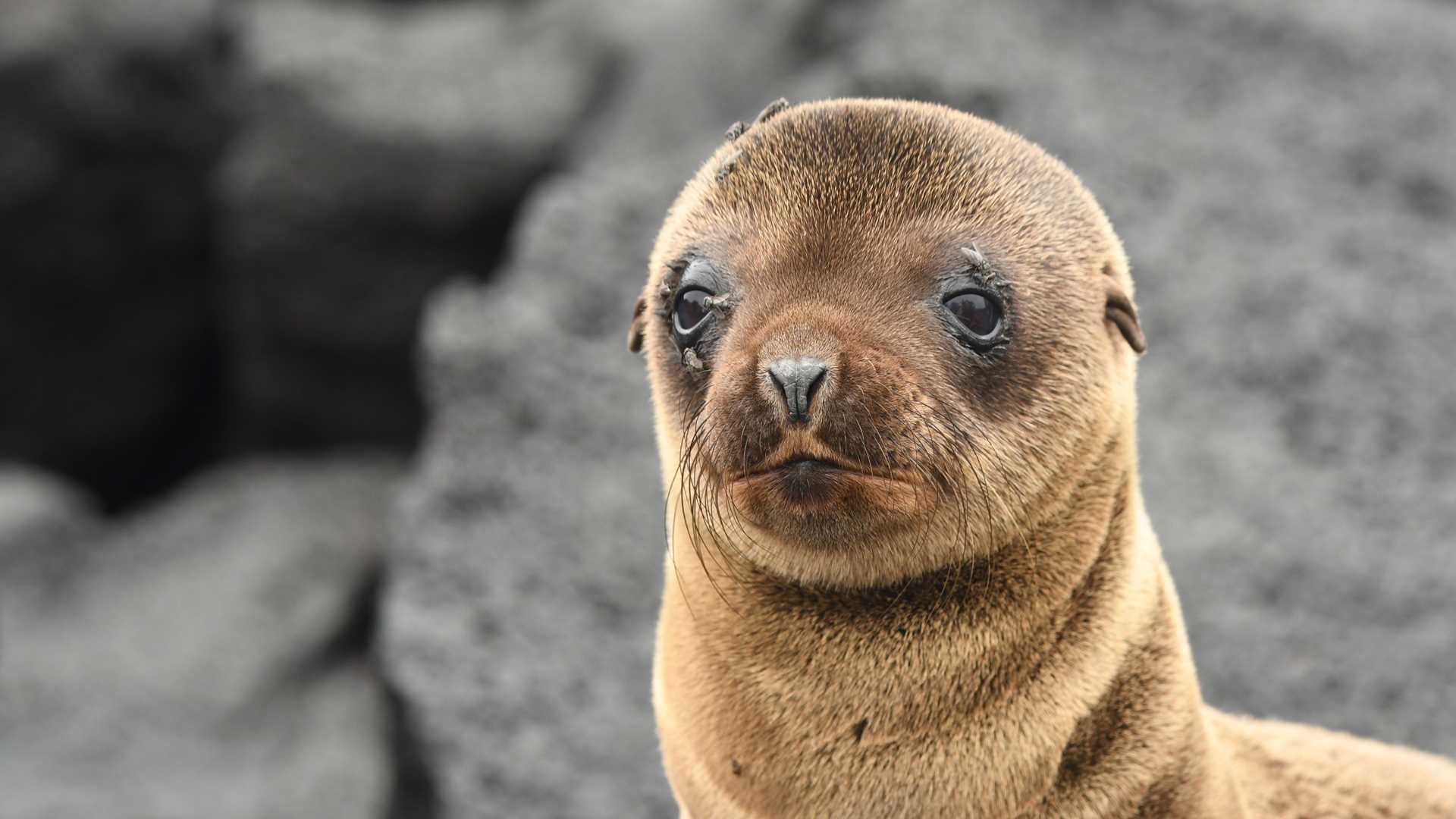Guests onboard National Geographic Endeavour II spent the day exploring Fernandina and Isabela Islands. We kicked off the day with an early morning whale watching session. Navigating through the Bolivar Canal offers a unique opportunity to observe cetaceans; this channel is a highly productive area with a consistent upwelling of deep sea, cool, nutrient rich waters–all of which are characteristics conducive to supporting an abundant whale population. After breakfast, we disembarked at Punta Espinoza. Fernandina Island is the most pristine island of its size, absent of invasive species. It is also an endemic species hotspot, with a disproportionate abundance of unique creatures. Guests were delighted to see Galapagos penguins swimming at the disembarkation site, and they observed an extraordinary number of marine iguanas. A unique subspecies of marine iguana, this population is the largest of all in the islands. We took a moment to observe the iguanas forcibly extract excess salt from their blood via a specialized salt gland located around their nostrils. Fernandina is the youngest island in the archipelago and very active still, having erupted just two years ago. The oldest lavas of the island are less than a million years old.
After our hike, we disembarked for snorkeling excursions. Guests were offered both deep-water and bay options. We observed Galapagos marine iguanas foraging on green algae below the sea surface. They grab the lava rocks with their large claws to combat wave surges. We watched as the iguanas propelled themselves through the water column by fusing their limbs to their bodies and undulating their muscular tails back and forth. We also encountered Pacific green sea turtles grazing on green algae. Both the sea turtle and marine iguana are considered marine megaherbivores; they help regulate the algal coverage on the rocky intertidal zones of the Galapagos. There were flightless cormorants diving for food as well. While they lost their ability to fly, the cormorants have become more effective divers. Their large, webbed feet help propel them down swiftly to find their prey.
After snorkeling, we boarded Zodiacs to go on an afternoon cruise around the coastline of Punta Vicente Roca. This site is an endemic species hotspot. We observed Galapagos penguins, marine iguanas, sea lions, and fur seals. Galapagos fur seals are a distinct species of sea lion in the Galapagos. Their ancestral species arrived from much colder waters in the south, whereas the Galapagos sea lions’ ancestral species arrived from the north. These two sea lion species have evolved to occupy distinct niches within a relatively small ecosystem.
Guests enjoyed a sunset wine tasting event on the Skydeck. We celebrated crossing the equatorial line while watching the sun sink into the sea.
Photo caption and photographer: A juvenile Galapagos sea lion watches visitors as they arrive to Punta Espinoza. Galapagos sea lions are incredibly curious creatures. They learn from socializing and playing with one another, and even with humans! Photo by Cristian Saa







